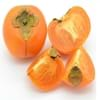Health Benefits
Cancer prevention, Heart care, Improves eye vision, Prevents diabetes, Reduces stress
Arthritis prevention, Cancer prevention, Gout treatment, Heart care
General Benefits
Boosts immune system, Cures cough, Cures fever, Digestive aid, Eye care, Helps in weight loss
Anti-inflammatory properties, Boosts immune system, Controls blood pressure, Controls blood sugar levels, Cures fever, Digestive aid, Sore throat treatment
Skin Benefits
Anti-aging benefits, Hydrates skin, Skin rejuvenation, Treatment of skin diseases
Reduces wrinkles, Treatment of acne
Hair Benefits
Good conditioner, Prevents hair loss, Protects hair
Promotes longer and healthier hair, Shiny hair
Allergy Symptoms
Abdominal pains, Anaphylaxis, Breathing difficulty, Diarrhea, Dizziness, Hives, Itching of mouth, Nasal congestion, Nausea, Vomiting
Anaphylaxis, Digestive Problems, Itching, Skin Rashes, Swelling
Side Effects
Allergic reaction, Bloating, Indigestion
Allergic reaction
Best Time to Eat
As a snack in the late afternoon, Don't consume at night and before bed, Eat the fresh ones, avoid mixing with any other foods, don't eat after meal., Morning time (before lunch)
As a snack in the late afternoon, Don't consume at night and before bed, Eat the fresh ones, avoid mixing with any other foods, don't eat after meal., Morning time (before lunch)
Vitamin B5 (Pantothenic Acid)
Vitamin C (Ascorbic Acid)
Vitamin K (Phyllochinone)
Calories in Fresh Fruit with Peel
Not Available
Calories in Fresh Fruit without Peel
Not Available
Calories in Frozen Form
Not Available
Calories in Dried Form
Not Available
Calories in Canned Form
Not Available
Not Available
Season
Summer
Autumn, Summer, Winter
Varieties
Hales Best Jumbo, Sweet 'N Early Hybrid, Hearts of Gold, Ambrosia, Athena, Honey Bun Hybrid, Fastbreak and Superstar
Green Anjou, Red Anjou, Bartlett, Red Bartlett, Bosc, Comice, Concorde, Forelle, Seckel and Starkrimson
Inside Color
Creamy Orange
White
Taste
Juicy, Musky, Sweet
Crunchy, Sweet
Origin
Africa, India
China, Japan
Soil Type
Sandy
Clayey, Loamy, Sandy
Climatic Conditions
Dry, Hot
Cold, Hot, Without frosts
Facts about
- Cantaloupe is known as rock-melon in some parts of the world.
- Christopher columbus first introduced cantaloupes to north america in 1494.
- The name 'Cantaloupe' as it is cultivated in papal gardens of cantaloupes, Italy.
- The first pear tree was planted in North America in 1620.
- The Chinese considered the pear fruit to be a symbol of immortality.
- This fruit was used as a natural remedy against nausea in ancient Greece.
Other Countries
Iran, Romania, Turkey, United States of America
Argentina, Belgium, India, Italy, Japan, South Africa, Spain, Turkey, United States of America
Top Importer
United States of America
Europe
Botanical Name
Cucumis melo var. cantalupensis
Pyrus communis
Synonym
Cucumis melo var. reticulatus
Not Available
Subkingdom
Tracheobionta
Tracheobionta
Division
Magnoliophyta
Magnoliophyta
Class
Magnoliopsida
Magnoliopsida
Subclass
Dillenhidae
Rosidae
Order
Cucurbitales
Rosales
Family
Cucurbitaceae
Rosaceae
Species
C. melo
P. communis
Difference Between Cantaloupe and Pear
We might think that Cantaloupe and Pear are similar with respect to nutritional value and health benefits. But the nutrient content of both fruits is different. Cantaloupe and Pear Facts such as their taste, shape, color, and size are also distinct. The difference between Cantaloupe and Pear is explained here.
The amount of calories in 100 gm of fresh Cantaloupe and Pear with peel is Not Available and 57.00 kcal and the amount of calories without peel is 34.00 kcal and Not Available respectively. Thus, Cantaloupe and Pear belong to Low Calorie Fruits and Low Calorie Fruits category.These fruits might or might not differ with respect to their scientific classification. The order of Cantaloupe and Pear is Cucurbitales and Rosales respectively. Cantaloupe belongs to Cucurbitaceae family and Pear belongs to Rosaceae family. Cantaloupe belongs to Cucumis genus of C. melo species and Pear belongs to Pyrus genus of P. communis species. Beings plants, both fruits belong to Plantae Kingdom.









